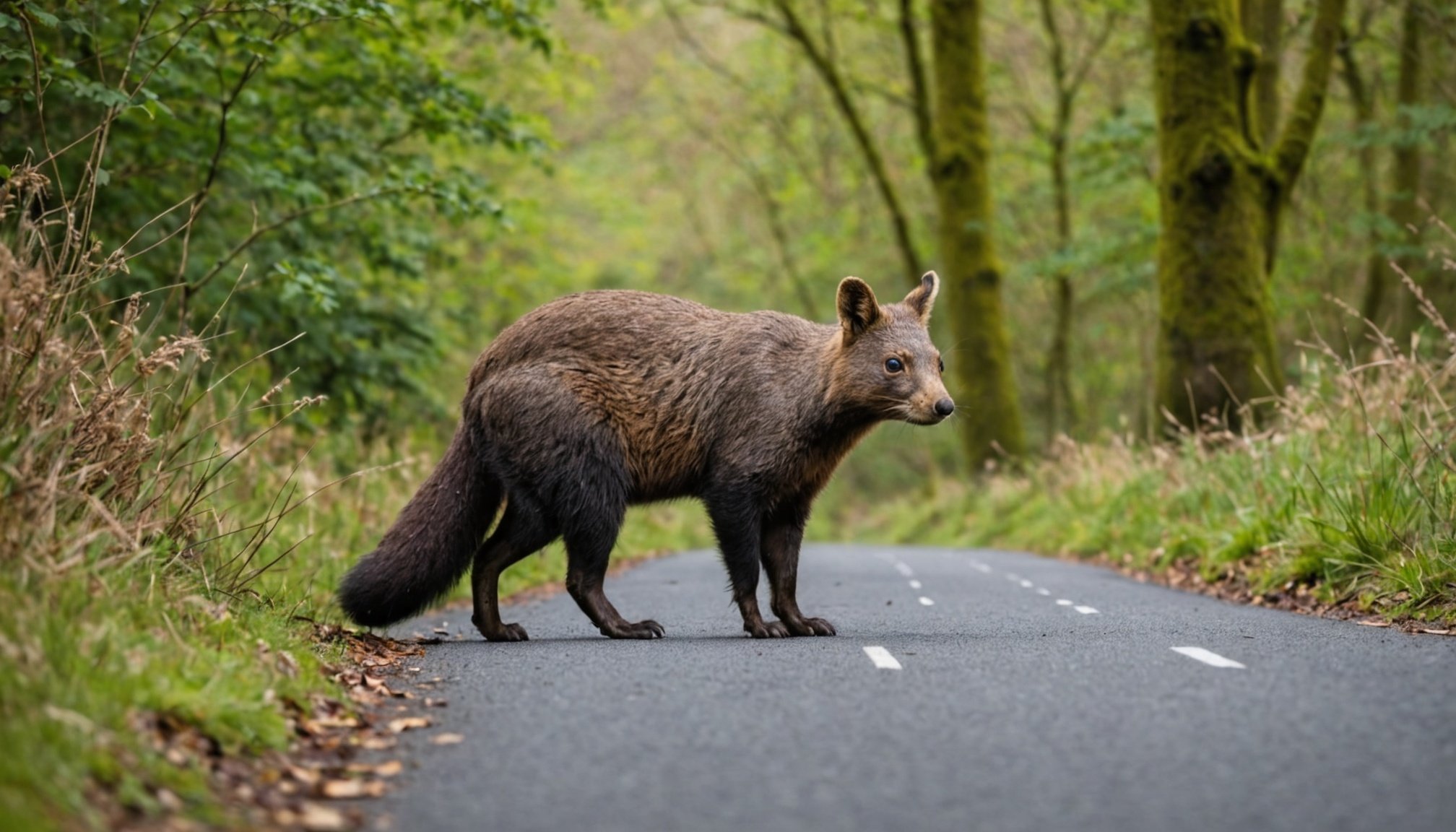Overview of UK Traffic Laws Impacting Wildlife
In the UK, traffic laws play a pivotal role in wildlife conservation efforts. The country’s legislation is shaped to address the significant challenge of roadkill, ensuring the protection of native wildlife. Key laws focus on mitigating road traffic impacts on wildlife, thereby promoting preservation.
One fundamental aspect of UK traffic laws is their dedication to tackling roadkill incidents. Regulations are tailored to protect animals often victimised by traffic, such as hedgehogs, badgers, and deer. These laws mandate specific measures, like speed limits in wildlife-rich zones and the installation of caution signs, aiming to alert drivers to potential animal crossings.
Also to see : Harmonizing Nature: Eco-Tourism’s Role in UK Habitat Conservation and Protection
Moreover, UK legislation encourages implementing road designs that incorporate wildlife-friendly features. This includes barriers and overpasses specifically fashioned to direct and safeguard animals moving across roads. Such initiatives not only reduce wildlife fatalities but also support broader conservation goals.
The role of traffic regulations extends beyond enforcement; they are integral to the wildlife preservation strategy in the UK. By systematically incorporating wildlife considerations into road planning, these laws significantly contribute to biodiversity conservation and ecosystem health.
Also to read : Empowering uk communities: your role in protecting local bat species
Statistics and Impact of Roadkill on Native Wildlife
Understanding the impact of roadkill on wildlife in the UK is crucial for effective conservation strategies. Recent roadkill statistics reveal troubling insights; numerous wildlife species face significant mortality due to road traffic. Often, small mammals like hedgehogs, as well as larger animals such as deer, fall victim to vehicle collisions. These incidents are not only tragic but also highlight a need for more efficient traffic and road safety initiatives.
The current figures on wildlife fatalities estimate thousands of animals are affected annually, exacerbating challenges for already endangered species. These statistics are stark reminders of how road traffic contributes to dwindling wildlife populations. Over time, these fatalities pose a threat to biodiversity and disrupt ecosystem health.
Long-term implications of roadkill extend beyond immediate wildlife loss. They can result in skewed population dynamics, thereby causing rifts in local ecosystems. Damaged ecosystems can, in turn, affect human communities reliant on healthy biodiverse environments. Addressing roadkill incidents through improved road safety measures and conservation data can mitigate the adverse effects on wildlife and support ecological balance. Understanding these figures is the first step in fostering a more harmonious coexistence between humans and nature.
Existing Mitigation Measures for Wildlife
Efforts to mitigate the impact of roads on wildlife are crucial in the UK. Success relies heavily on effective wildlife crossings, which come in various forms like underpasses and overpasses. These crossings are tailored to different species, ensuring a safe passage across busy roads. Their implementation has proven beneficial, significantly reducing the frequency of wildlife fatalities and promoting road safety initiatives that complement broader conservation practices.
Overview of Wildlife Crossings
Wildlife crossings offer essential routes for animals like hedgehogs and deer, who are often victims of road traffic. These structures conserve animal populations by allowing them to move freely between habitats, ultimately reducing roadkill. UK examples highlight their importance; they decrease animal-vehicle collisions, thus safeguarding both animals and drivers.
Signage and Awareness Campaigns
Strategic traffic signage is also instrumental, raising driver awareness of potential animal crossings. Community-led campaigns further enhance awareness, educating the public on the significance of protecting local wildlife populations through cautious driving. These combined efforts foster a culture of safety and conservation.
Technological Solutions
Emerging technological solutions are promising, with detection systems alerting drivers to nearby animals. Additionally, GPS and mobile apps assist in wildlife monitoring, integrating technology into traffic law enforcement. These innovations pave the way for smarter road safety measures, helping to safeguard wildlife in more effective ways.
Policy Improvements and Community Efforts
Exploring the intersection of policy reforms and community involvement highlights ongoing efforts to enhance wildlife conservation through UK traffic laws. Significant challenges remain in effectively integrating wildlife priorities into current legislations. Policy improvements focus on strengthening existing measures, like updating traffic signs and improving road designs, to ensure they adequately address modern conservation needs and reduce roadkill incidents.
Suggested reforms include:
- Introducing stricter penalties for speeding in wildlife-rich areas.
- Incentivising the installation of innovative wildlife crossings.
These policy changes can address gaps in current practices and provide robust frameworks for the future.
Community conservation efforts are also crucial. Successful advocacy initiatives demonstrate the pivotal role local groups play in promoting wildlife protection. These initiatives, often spearheaded by motivated citizens, drive policy changes and raise public awareness about the importance of conserving native species. Emphasising practical solutions, communities can foster stronger partnerships with policymakers to implement effective conservation strategies.
By focusing on policy and community efforts, the UK can bolster its wildlife preservation goals, ensuring that meaningful changes come to fruition for protecting the nation’s diverse ecosystems.















